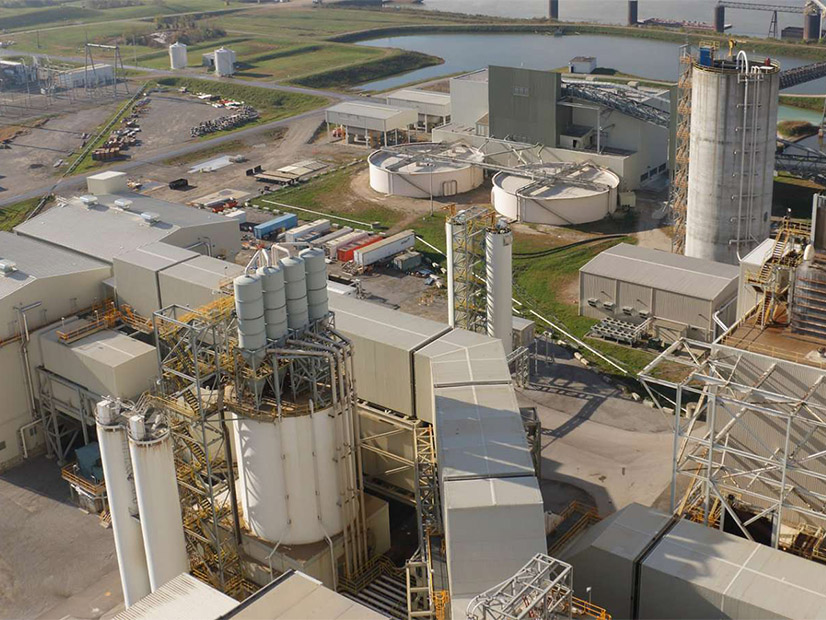
PPL reported a positive first quarter during its earnings call on Thursday after announcing earlier in the week that it will raise its default electricity rates by 38% for residential Pennsylvania customers on June 1.
The company reported first-quarter earnings of $273 million ($0.37/share), compared with a first-quarter 2021 net loss of $1.84 billion (‑$2.39/share). Adjusting for special items, PPL’s earnings were $305 million ($0.41/share), compared with $219 million ($0.28/share) a year ago. Some of those items included integration expenses from the planned acquisition of Narragansett Electric from National Grid and last year’s non-cash net loss from its discontinued operations associated with PPL’s former U.K. utility business, Western Power Distribution.
PPL’s rebound comes after the company cut its dividend in half and missed earnings and revenue targets in the fourth quarter of 2021. (See PPL Announces Losses, Dividend Cut in Q4 Call.)
This year’s rate increase will add about $34/month to the average bill. The residential rate will rise to 12.366 cents/kWh, while small businesses will pay 11.695 cents/kWh.
CEO Vincent Sorgi said PPL is “very focused” on making sure customers are familiar with programs to help lower their rates and to also “provide flexible payment plans” like those instituted at the height of the COVID-19 pandemic.
“Commodity prices are way up this year versus last year,” Sorgi said. “That’s a pass-through cost for us, but it’s upwards this year versus last. It could be as much as 50 to 60%, so it is very significant. We are actively reaching out to our customers to help them.”
Narragansett Deal
PPL continues the acquisition process of Narragansett, Sorgi said, with the company receiving approval in late February from the Rhode Island Division of Public Utilities and Carriers. (See RI Agency Approves PPL Acquisition of Narragansett Electric.)
The Rhode Island attorney general’s office appealed the division’s decision to the state Superior Court, receiving a stay of the approval. PPL and other stakeholders provided oral arguments on April 26, with the AG’s office contending that the division misapplied the statutory standard for approval and failed to adequately consider Rhode Island’s Act on Climate in its analysis.
“We disagree and believe the extensive record and evidence in this case demonstrate that the division properly applied the statutory standard and correctly approved the transaction,” Sorgi said. “We continue to believe Narragansett Electric is an excellent fit for PPL and that PPL is an excellent fit for the state of Rhode Island. We remain confident that we will reach a positive outcome in the proceeding.”
Kentucky Operations
Sorgi also highlighted PPL’s Kentucky segment, which earned 25 cents/share for the first quarter, a 7-cent increase over a year ago and attributable to higher base retail rates that took effect July 21.
Ford Motor Co.’s announcement that it will build a $6 billion battery manufacturing complex within PPL’s service territories in Glendale, Ky., “will help put the state at the forefront of the auto industry’s transformation to electric vehicles,” Sorgi said. To support the project, PPL subsidiary Kentucky Utilities has requested regulatory approval to build two 345-kV and two 138-kV transmission lines and two new substations at an estimated cost of up to $200 million.
Sorgi said Kentucky Utilities is continuing to look for opportunities to advance clean energy technologies, including joining the state’s new hydrogen hub initiative in February. “We’re excited to join this new hydrogen hub initiative, and we will continue to engage with the Kentucky administration and other stakeholders as the state’s clean energy strategy evolves.”
He also said that based on PPL’s current coal plant retirement schedule, the company expects its coal capacity to be reduced from just over 4,700 MW to about 550 MW in 2050. The remaining capacity is the Trimble County 2 plant in Kentucky, which was completed in 2011.
“There are any number of technology developments, regulatory mandates or circumstances that could impact the timing of the end of this plant’s economic life,” Sorgi said. “We believe that research and development is key to our clean energy future and fully expect that innovation, technological advances and the relative economics of other cleaner energy sources will support the company’s commitment to not burn unabated coal at this facility by 2050.”

